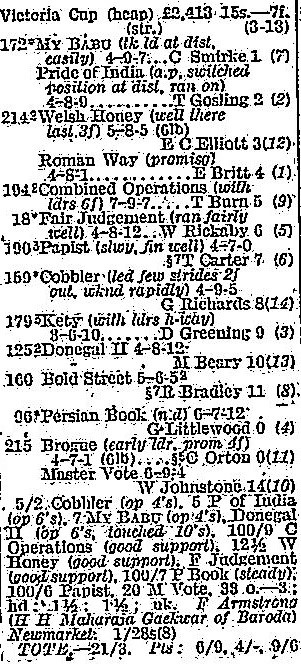Herbert Jones, Lester Reiff & Danny Maher
Derby winning jockeys of the Edwardian era
Herbert Jones (1881-1951), having started as an apprentice to royal trainer, Richard Marsh at the age of 10, he later developed a talent for humouring difficult horses, including the bad tempered Diamond Jubilee (see below). And since none of the stables regular jockeys could master him, not only did he keep the ride, but in 1900, won the Triple Crown on him for the Prince of Wales.
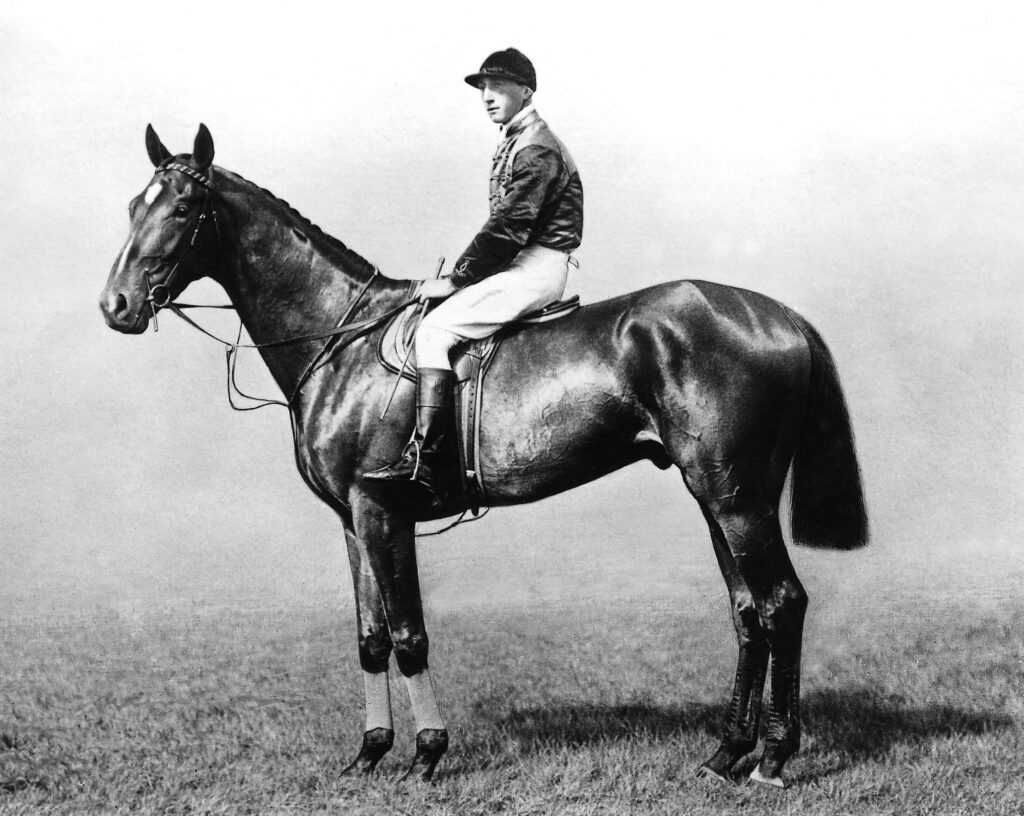
Jones won five other Classic races, including the Two Thousand Guineas and Derby for the now, King Edward VII on Minoru (1909), and the Oaks for William Hall Walker on Cherry Lass (1905). He is also remembered as the jockey thrown from the King’s horse, Amner, when brought down by the suffragette, Emily Davison in the 1913 Derby. Marsh wrote of Jones in his autobiography, “A better servant no man ever had, and a straighter or more honest jockey never got on a horse.”
Lester Reiff (1877-1948), and his brother John were two talented American jockeys who came to England at the turn of the century. Riding in the short-stirrup, crouching style made famous by Tod Sloan, Lester Reiff became Champion Jockey in 1900 with 143 winners. The following year, 1901 he won the Derby for William Whitney on Volodyovski (see below).
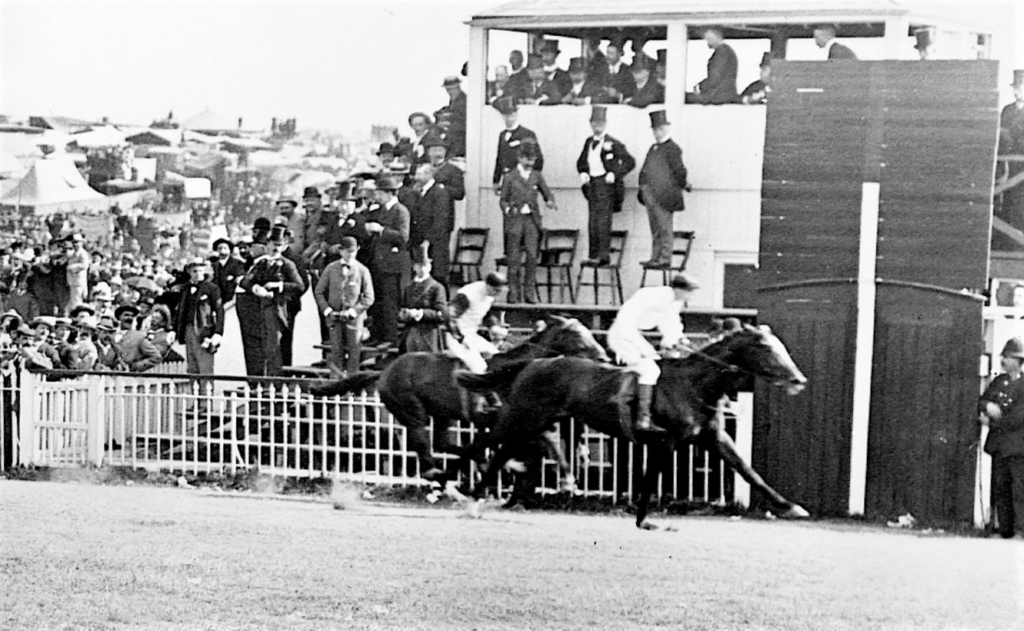
However, ‘the American invasion’, as it became known, also included a ring of unscrupulous gamblers and trainers, who, in the main, had taken doping – not unlawful in Britain at this time – to a new level of expertise. Race riding to suit heavy gamblers was also a thorn in the Jockey Club’s side and, after watching Lester Reiff (see below), carefully for many weeks, culminating in his short-head defeat by his brother at Manchester on 27 September, 1901, they withdrew his licence and warned him off.
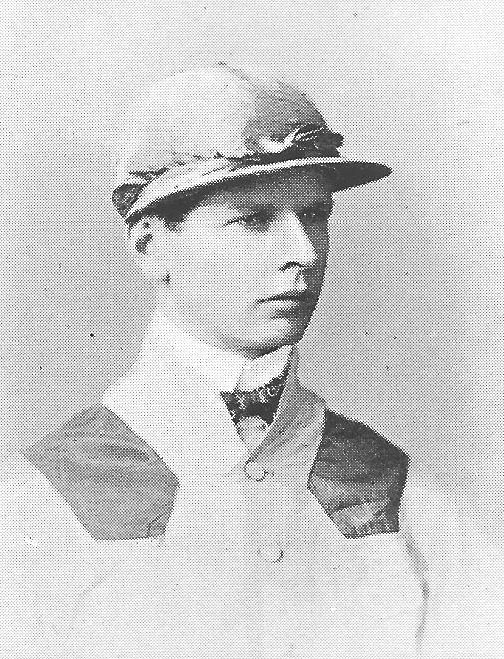
Danny Maher (1881-1916), was born of Irish parents in Hartford, Connecticut. He became Champion Jockey in the U.S.A. at the age of 17, then around 1900, together with many other top American jockeys, he came to England. Soon after, riding regularly for Newmarket trainer George Blackwell, he won the Triple Crown on Rock Sand in 1903 (see below).
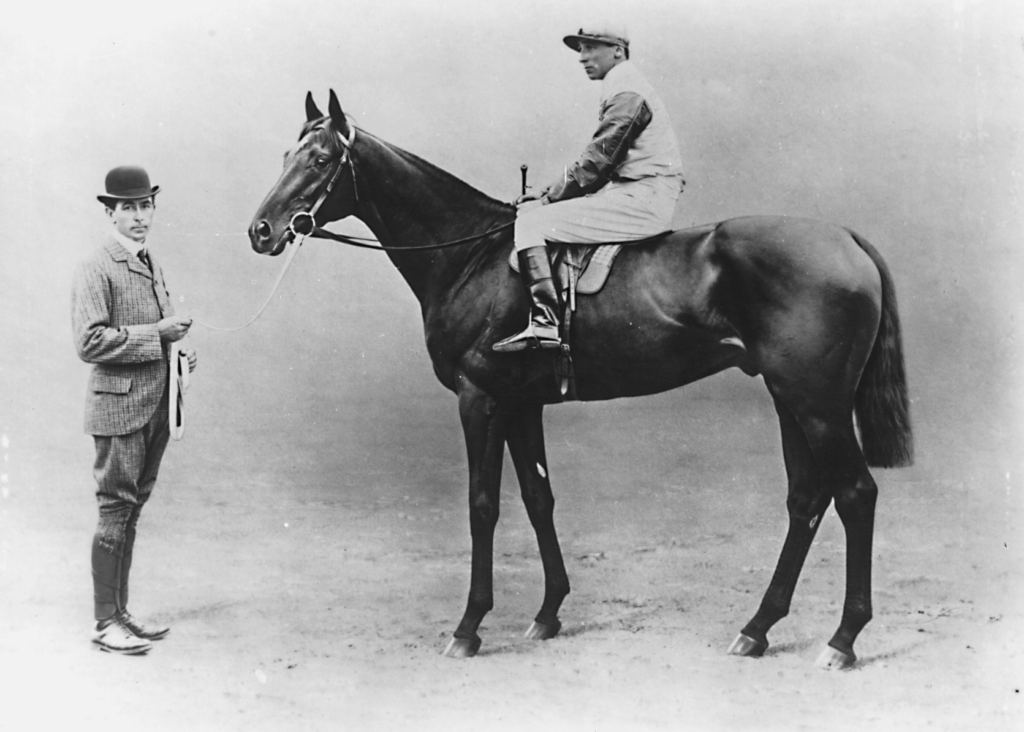
Three years later, he set a new record time of 2 min. 36.80 sec. when winning the Derby for Major Eustace Loder on Spearmint. In 1908, Maher became Champion Jockey with 139 winners and again in 1913 with 115 winners. Maher rode with style and was strong at the finish. However, unable to ride at less than 8st 0lb, his efforts to waste took their toll and he died of consumption in 1916. A British citizen from 1913, he was buried in Paddington Cemetery, Mill Hill, London.
**********************************
Michael now has his histories of the Derby for sale under
Michael’s BOOKS FOR SALE

